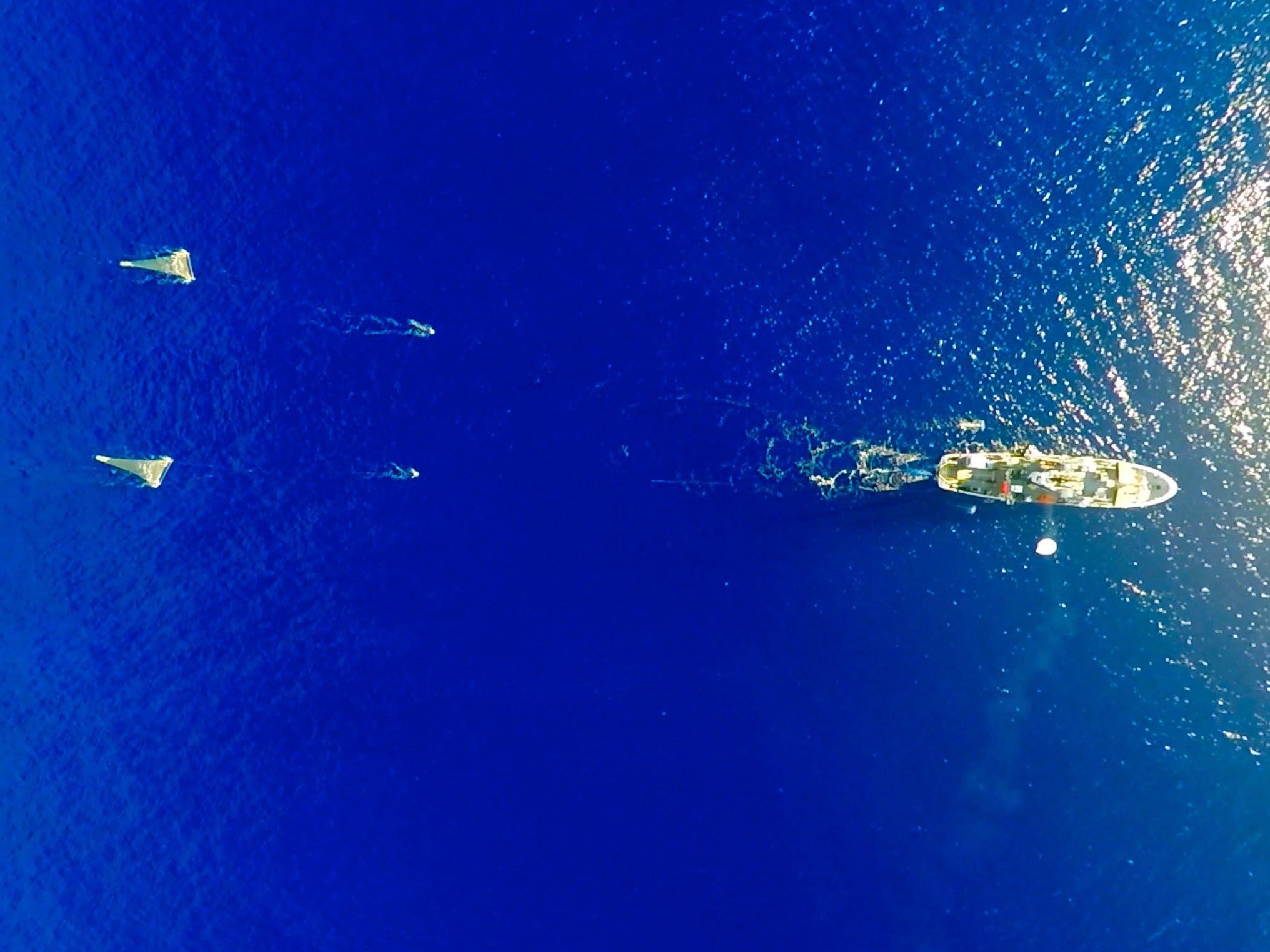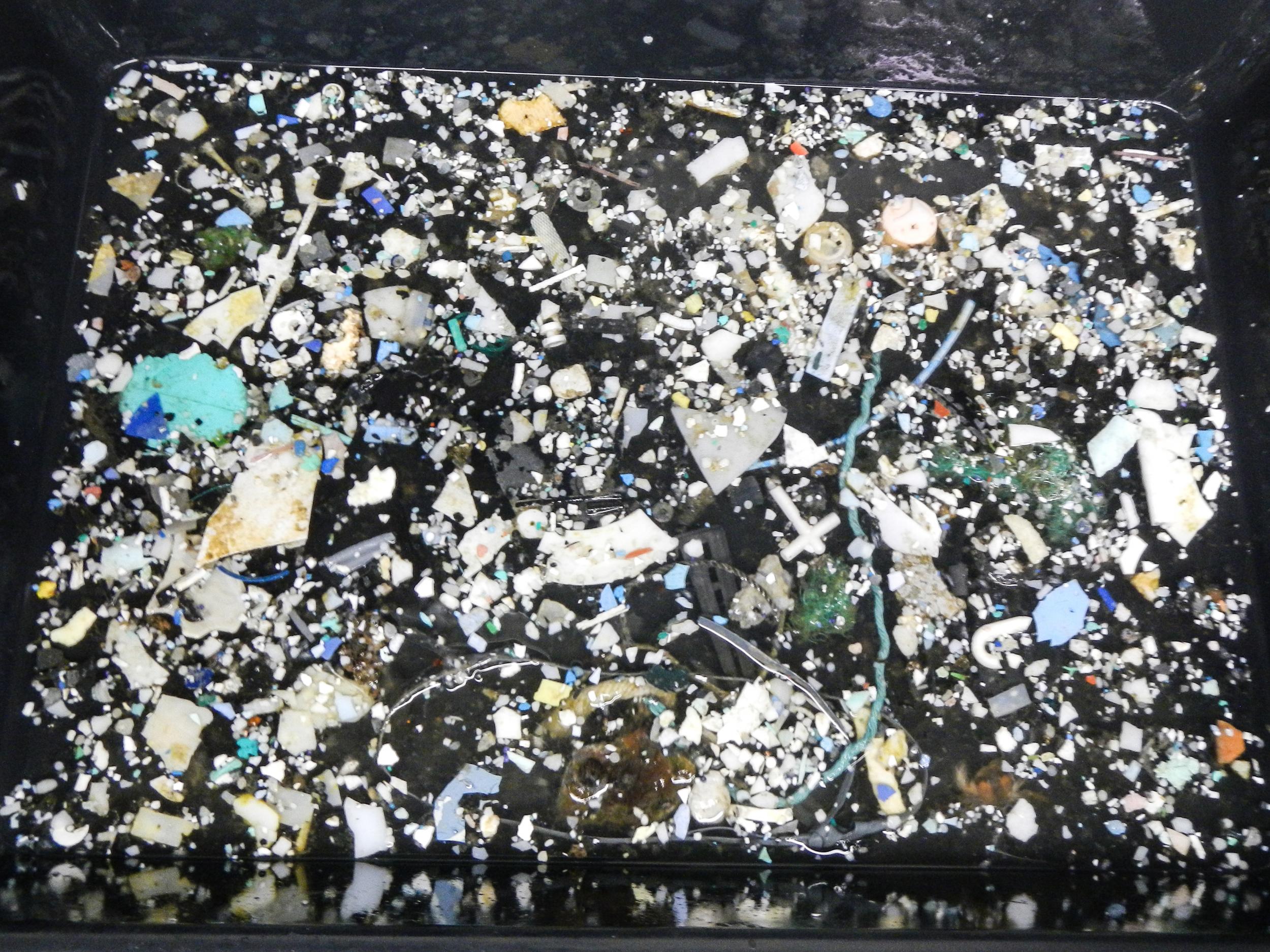‘Great Pacific garbage patch’ 16 times bigger than previously thought, say scientists
New research shows quantity of microplastics is growing 'exponentially' in zone between California and Hawaii
Your support helps us to tell the story
From reproductive rights to climate change to Big Tech, The Independent is on the ground when the story is developing. Whether it's investigating the financials of Elon Musk's pro-Trump PAC or producing our latest documentary, 'The A Word', which shines a light on the American women fighting for reproductive rights, we know how important it is to parse out the facts from the messaging.
At such a critical moment in US history, we need reporters on the ground. Your donation allows us to keep sending journalists to speak to both sides of the story.
The Independent is trusted by Americans across the entire political spectrum. And unlike many other quality news outlets, we choose not to lock Americans out of our reporting and analysis with paywalls. We believe quality journalism should be available to everyone, paid for by those who can afford it.
Your support makes all the difference.Nearly 80,000 tonnes of plastic are floating in the area of the ocean known as the “Great Pacific garbage patch”.
Scientists arrived at this figure, which is around 16 times higher than previous estimates, by assessing aerial images alongside data from ships dragging nets through the region.
Occupying the waters between California and Hawaii, the patch is the largest of five major offshore waste accumulation zones that result from converging ocean currents.
The research was conducted by scientists at the Ocean Cleanup Foundation, who are attempting to understand the true extent of plastic pollution in the world’s oceans.
“Overall you would expect plastic pollution is getting worse in the oceans because we are producing and using more plastics, globally and annually,” Dr Laurent Lebreton told The Independent.
“We found that there’s about 80,000 tonnes of plastic floating in an area of 1.6 million square kilometres. That corresponds to about 1.8 trillion particles of all sizes,” he said.
In total, 99 per cent of everything the researchers found floating in the patch was made from plastic.

Not only was there a larger quantity of plastic in the study area than previously thought, the scientists noted that microplastics – tiny fragments less than five millimetres in size – appeared to be accumulating rapidly.
Based on their analysis, published in the journal Scientific Reports, Dr Lebreton and his colleagues concluded the amount of plastic was “increasing exponentially” within the patch, with the quantity of microplastics roughly tripling since the 1970s.
“When we compare our results with other studies on microplastics – because other studies were only reporting on microplastics – we showed that the concentrations have been increasing,” said Dr Lebreton.
To expand their study beyond microplastics, the scientists assessed aerial images together with debris collected from over 600 net tows carried out by 18 vessels across the patch.

Of the plastic waste they collected, nearly half of the mass consisted of fishing nets, and – while microplastics are a major problem – over three quarters of the plastic observed was debris larger than five centimetres.
Over time, these larger pieces are gradually broken down into ever-smaller pieces, forming the “plastic soup” that makes up the Great Pacific Garbage Patch and other accumulation zones.
The analysis was conducted by the Ocean Cleanup Foundation as part of its efforts to develop advanced technologies that can effectively remove debris from areas like the Great Pacific garbage patch.
“In order to solve a problem, you really first have to understand the problem,” said Boyan Slat, Founder and CEO of the Ocean Cleanup Foundation.
They found that while researchers have been studying the detritus found in this region since the 1970s, the small nets generally used to collect samples had skewed results.
“We had this hunch there was this measurement bias towards the smaller pieces, because of the way we have been sampling in the past,” said Mr Slat.
The use of aerial surveys in particular allowed the researchers to account for larger debris more accurately, and Dr Lebreton said the results will be fed back to the Ocean Cleanup engineers to help them develop effective solutions.
The scientists said their findings show a variety of methods are necessary to accurately filter through the mass of plastic in the sea, and provide an accurate picture of the scale of the problem.
“We don’t really have an idea of where and how much plastic there is – it’s a fairly new science, studying plastic debris in the ocean, so I hope the new techniques we introduce here will be used in other parts of the world,” said Dr Lebreton.

Join our commenting forum
Join thought-provoking conversations, follow other Independent readers and see their replies
Comments